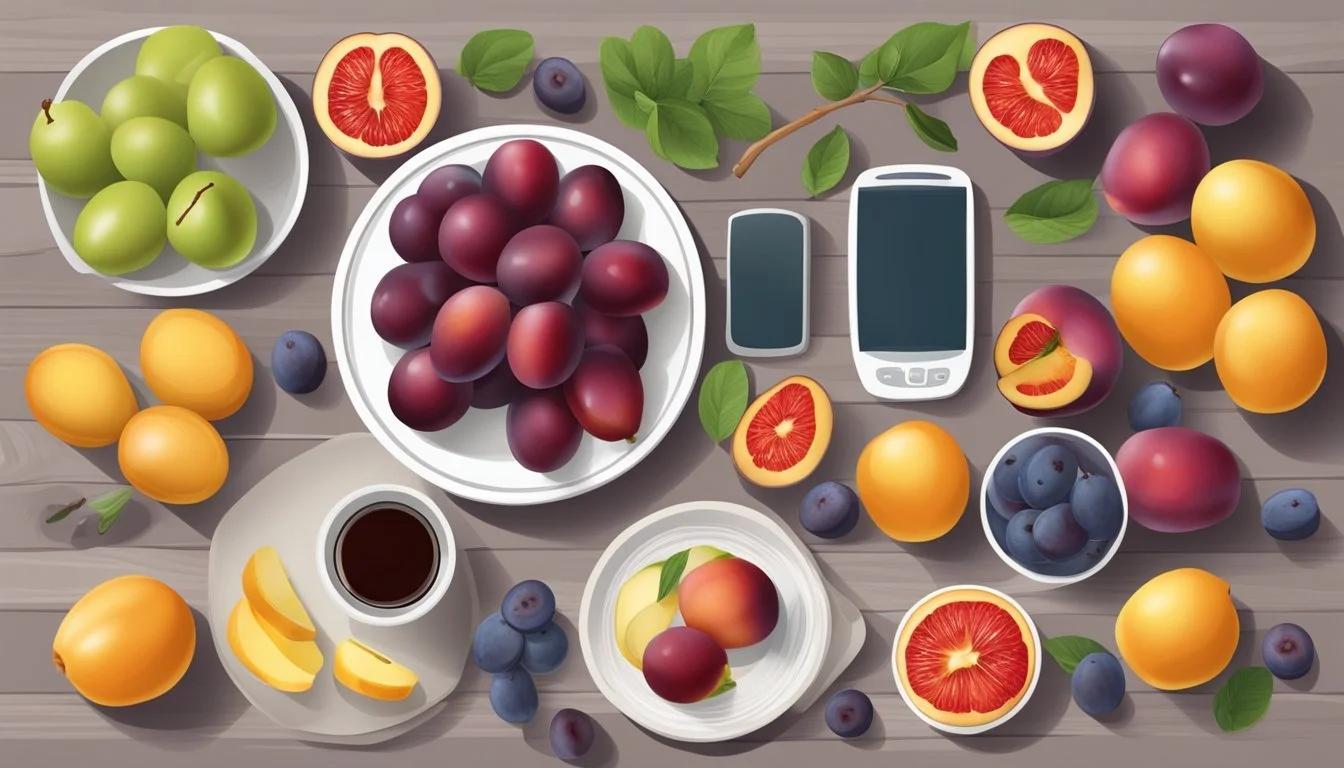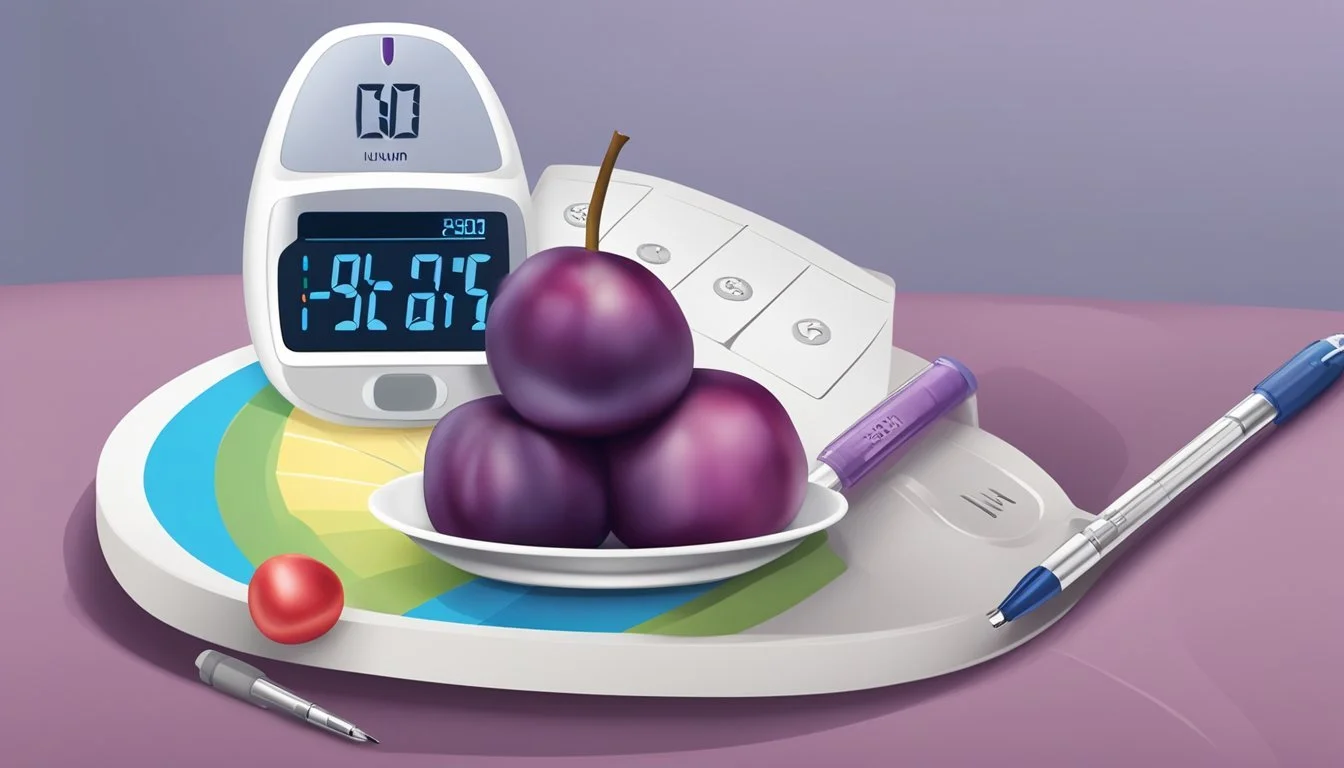Can Diabetics Eat Plums?
Understanding Fruit Intake for Blood Sugar Management
When considering dietary choices, individuals with diabetes must carefully manage their blood glucose levels to stay healthy. Incorporating fruits, which are rich in vitamins, minerals, and fiber, is part of a balanced diet, but it's important to choose fruits with due consideration to their sugar content and glycemic index. Plums are a fruit of interest due to their potential benefits for blood sugar regulation.
Plums have a lower sugar content compared to many other fruits and rank favorably on the glycemic index, making them a suitable option for those managing diabetes. They also contain various vitamins and antioxidants which can contribute to overall health. The fiber content in plums can help slow the absorption of glucose, thereby preventing rapid spikes in blood sugar levels.
Understanding Diabetes and Nutrition
Managing diabetes requires a careful balance of nutrition to maintain stable blood sugar levels. A focus on carbohydrate intake, fiber-rich foods, and the glycemic index is crucial to a diabetic-friendly diet.
The Role of Carbohydrates in Diabetes
Carbohydrates are the primary food component that raises blood sugar levels. For diabetics, monitoring carbohydrate intake is essential. The American Diabetes Association suggests that an individual meal plan should be tailored, focusing on the quantity and type of carbs consumed.
Importance of Fiber for Blood Sugar Control
Fiber plays a significant role in blood sugar regulation. It slows the absorption of sugar, helping prevent blood sugar spikes. A diet rich in high-fiber foods, including certain fruits, is beneficial for diabetics.
Nutritional Profile of Plums
Plums are a low-calorie fruit that carries a substantial nutritional profile. They provide essential vitamins, minerals, and fiber while containing relatively low amounts of sugar compared to other fruits. This makes them quite suitable within a diabetic meal plan.
Glycemic Index and Fruit Consumption
The glycemic index (GI) measures how much specific foods raise blood sugar. Plums have a low GI, meaning they have a less dramatic effect on blood sugar levels. Diabetics should prioritize low GI fruits like plums over high GI options.
Dietary Recommendations for Diabetics
Portion control and a balanced diet are fundamental in managing diabetes. Diabetics are advised to consume whole fruits over fruit juice, as whole fruits contain more fiber and less concentrated sugar, thus being part of a balanced diet without unnecessary blood sugar spikes. Servings of fruit, like plums, can be included in meal plans while respecting carbohydrate counting guidelines for optimal health benefits.
Plums and Diabetes
Plums may be a suitable choice for individuals with diabetes due to their low glycemic index and nutrient density, which can contribute to blood sugar regulation.
Benefits of Eating Plums for Diabetics
Nutrient Profile: Plums are rich in vitamins, including Vitamin C, and antioxidants, which are essential for overall health. They are also a source of dietary fiber, which can help slow down the absorption of glucose into the bloodstream, thereby managing blood sugar levels more effectively.
Low in Natural Sugars: Compared with other fruits, plums contain less sugar, which makes them a better option for those monitoring their blood sugar levels.
Glycemic Index: Plums are low on the glycemic index (GI), meaning they have a relatively low impact on blood sugar.
Antioxidant Properties: Antioxidants in plums can reduce oxidative stress, which is particularly beneficial for diabetics, as oxidative stress is a known factor in diabetes complications.
Risks and Considerations
Portion Sizes: While plums can be part of a diabetic diet, attention to portion sizes is crucial. It's recommended to stick to a serving size that aligns with 15 grams of carbohydrate.
Risk of Hypoglycemia: Overconsumption of plums in a short period could lower blood glucose levels too much, posing a risk of hypoglycemia.
Comparison with Added Sugars: Plums, being a whole fruit, have natural sugars. They are a healthier alternative to snacks that contain added sugars.
Blood Sugar Monitoring: Individuals with diabetes should monitor their blood sugar to see how plums affect them personally, as individual responses can vary.
Selecting the Best Fruit Options
When individuals with diabetes choose fruit, their best options are those that minimize blood sugar spikes while providing nutritional benefits.
Whole vs. Processed Fruit
One should prioritize whole fruit over processed fruit. Whole fruits, such as apples, berries, and plums, contain fiber which helps to slow the absorption of sugar into the bloodstream. In contrast, processed fruits often have added sugars or syrup, leading to quicker and higher spikes in blood glucose levels.
Fresh, Frozen, or Canned: What's Best for Diabetics?
For those managing diabetes, it's recommended to select fresh or frozen fruits without added sugars. These preserve the natural fibers and nutrients. Canned fruits can be a good option too, when they are packed in juice or water, not syrup, and are labeled as having no added sugar or unsweetened.
Fresh fruit: Choose fresh varieties like strawberries, pears, and plums for the highest nutrient content.
Frozen fruit: Opt for berries or mango chunks, which are often flash-frozen at peak ripeness, retaining their vitamins and antioxidants.
Canned fruit: Look for phrases such as "packed in its own juices" or "no added sugar."
Alternative Fruit Choices for Diabetics
Diabetics should consider berries, such as raspberries and blackberries, which are low on the glycemic index. Apples and pears can also be excellent choices due to their fiber content and ability to satisfy a sweet craving. Bananas, often higher in sugar, can be eaten in moderation, particularly when they are less ripe. Diabetic individuals should limit intake of dried fruits (What wine goes well with dried fruits?) and 100% fruit juices due to their higher concentrated sugar content.
Berries: Half a cup serving is generally acceptable.
Apples/Pears: A small apple or a medium pear are suitable options.
Bananas: Consume less ripe bananas in moderation to reduce sugar intake.
Incorporating Plums into a Diabetic Diet
Individuals with diabetes can enjoy plums in moderation as part of a balanced diet. Plums offer nutritional benefits without significantly raising blood sugar levels when consumed in proper servings.
Effective Portion Sizes for Plums
For those managing diabetes, portion control is crucial. A serving size of plums typically consists of:
One medium-sized fresh plum
About ½ cup of sliced plums
It’s recommended to limit the portion to 15 grams of carbohydrate, aligning it with a diabetic meal plan.
Creative Ways to Include Plums in Meals
Plums can be incorporated into a diabetic meal plan through various recipes:
Chopped into salads for a sweet twist
Blended into smoothies with Greek yogurt and a handful of spinach for a nutrient-packed drink
Sliced and added as a topping to whole grain cereals or oatmeal
Remember to account for these additions in the overall meal's carbohydrate content.
Professional Dietary Guidance
Consulting with a registered dietitian can provide personalized advice on including plums in a meal plan. They offer guidance on:
Ideal serving sizes that fit individual carbohydrate targets
Incorporating a variety of choices to ensure a nutritionally balanced diet
Following their tailored recommendations will help maintain blood sugar control while enjoying the benefits of plums.
Managing Blood Sugar Levels
When it comes to diabetes management, understanding the impact of foods like plums on blood sugar levels is crucial. This section covers key aspects such as fruit consumption monitoring, the interplay of various nutrients with blood glucose, and the importance of adjusting medications in response to dietary choices.
Monitoring Fruit Consumption
Individuals with diabetes need to be vigilant about the amount and type of fruits consumed. Plums, being lower in sugar than many fruits, can fit into a diabetic diet when portion sizes are controlled. Servings of plums should be kept to a standard small plum per serving or about 1/2 cup of sliced plums to maintain proper blood sugar levels. Concerns regarding blood glucose should guide the timing and quantity of plum consumption. The glycemic index (GI) of plums is considered low to medium, which means they have a gradual effect on blood sugar levels.
Influence of Other Nutrients on Blood Glucose
Plums contain a balance of nutrients that can influence blood glucose control. Alongside the sugar content, they are a source of dietary fiber, vitamins, and antioxidants. Dietary fiber, in particular, contributes to slower absorption of sugar, therefore aiding in maintaining stable blood glucose levels. The protein and fat content in accompanying meals can also alter the rate at which carbohydrates are metabolized, potentially smoothing out blood sugar spikes.
Adjusting Medications According to Diet
As diet can significantly impact blood glucose, individuals may need to adjust their medications in accordance with their fruit intake. When incorporating plums or any other fruit into their diet, it's important for diabetics to consult healthcare providers to determine if there's a need for medication adjustments to manage blood sugar. Regular monitoring of blood sugar levels after eating plums will provide practical insights into how one's body responds to this fruit, guiding potential medication and insulin adjustments.
Preventive Health and Fruit Intake
Incorporating fruits like plums into the diet can be beneficial for diabetics, playing a crucial role in preventive health. It is important to consider the content of natural sugars, the benefits of vitamins and antioxidants they provide, and how they can contribute to weight management and the reduction of chronic disease risks.
Role of Vitamins and Antioxidants in Preventing Complications
Fruits, including plums, offer an abundance of vitamins and antioxidants which are essential in combatting free radicals—molecules that cause oxidative stress and can lead to complications in diabetic individuals. Plums are particularly high in vitamin C, a potent antioxidant that supports the immune system and may help reduce inflammation. This can mitigate the risk of conditions like heart disease and cancer.
Fruits in Weight Management for Diabetics
Maintaining a healthy weight is vital for diabetics, and fruits such as plums can assist in this. They contain dietary fiber, which helps regulate appetite and sustains a feeling of fullness. This can help prevent overeating and promote a stable, healthy weight. Moreover, the fiber in plums aids in the slow absorption of natural sugars, reducing blood sugar spikes.
Regulating Fruit Intake to Reduce Chronic Disease Risks
While fruits are an important part of a balanced diet, moderating their intake is key for diabetics to manage blood sugar levels due to their natural sugar content. Consuming fruits with a lower glycemic index, such as plums, may help maintain stable blood glucose levels. This regulation of fruit intake aids in lowering the risk of chronic diseases, including heart disease and diabetes-related complications.





